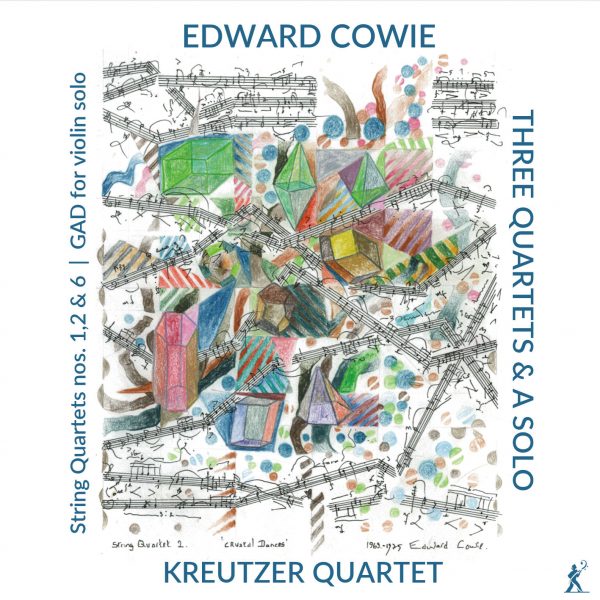Musical Opinion
Edward Cowie, now in his mid-seventies, has an unusual background for a composer. He studied in physics up to PhD level; he is a painter who has had more than forty exhibitions in galleries round the world; he is also a naturalist and some of his compositions ‘warn of the dangers to the wild and living world through the continuing destruction at the hands of humanity’. A kind of musical David Attenborough, then: one just hopes the world is listening to both of them. He spent twelve years in Australia, returning to England in 1995 and has had prominent associations with the BBC and other organisations.
Cowie relates all his activities so that he often makes coloured sketches — some reproduced in the CD booklet — before starting on a musical work. He states that he is more involved with ‘seeing before hearing — drawing before composing’ and is ‘more inspired by natural history than musical history’. These concerns are shared by Peter Sheppard Skaerved, which makes him such a sympathetic interpreter in all these works.
The overall style, which applies to everything here, is a kind of continuity of discontinuity. In visual terms it resembles the Twittering Machine of Paul Klee as well as Cowie’s own drawings. One approach would be to regard the textures as natural objects like a rock face, changing cloud formations or waves breaking.
Quartet No. 1 Dungeness Nocturne (1969) is in a single movement with the string writing fragmentary, scurrying and usually agitated. A kind of chorale at the end is particularly impressive, even a note of consolation. Quartet No. 2 Crystal Dances (1977) is recognisably by the same composer with slightly more soloistic passages for some players.
The Four Winds, the title of Quartet No. 6 (2012), occur in the Old Testament and are usually associated by the Israelites with the overwhelming power of God. Cowie’s order is Autumn, Winter, Spring, Summer. Some thirty years later, Cowie is more melodic, paragraphs are longer and the break into movements aids comprehension.
Cowie’s prefatory note in the booklet is headed: Highly Strung Music. This could be taken to refer to his virtuoso technique with string instruments — he played the violin himself — but it also reflects the composer’s own state of health at the time of composing. He has suffered from General Health Anxiety since he was fifteen which can give rise to panic attacks. Cowie has described how he worked through all this whilst writing the solo piece GAD, which functioned as a kind of therapy. It was written for Peter Sheppard Skaerved and is a virtuoso study, tailor made for this performer. A strong recommendation for this CD is the standard of the performances by the Kreutzer Quartet and its leader — simply outstanding.
@divineartrecordingsgroup
A First Inversion Company
Registered Office:
176-178 Pontefract Road, Cudworth, Barnsley S72 8BE
+44 1226 596703
Fort Worth, TX 76110
+1.682.233.4978












